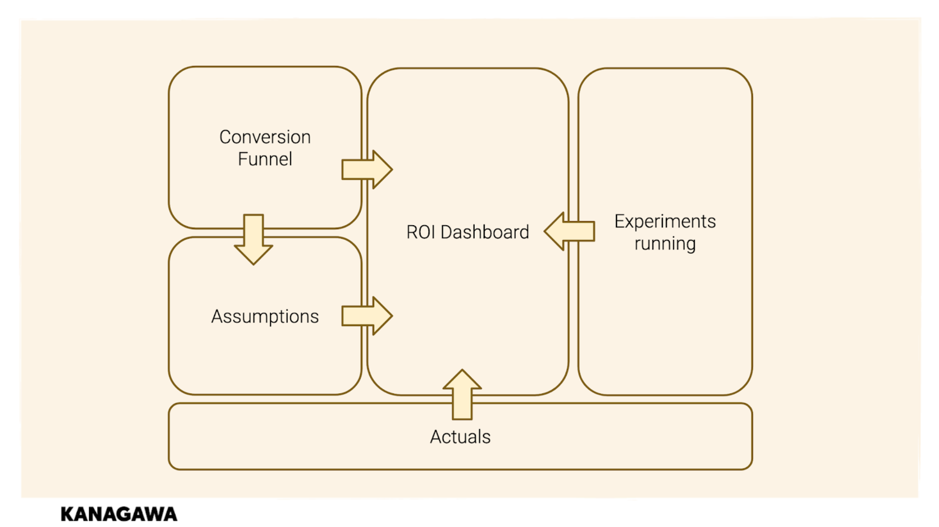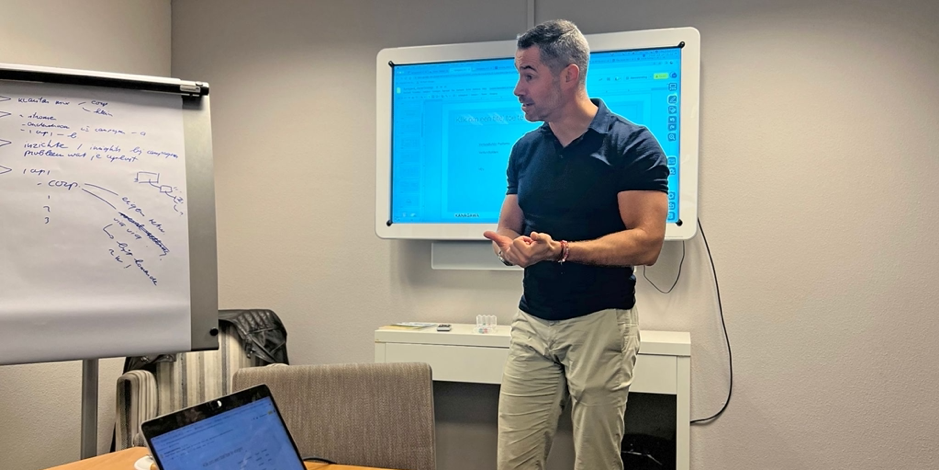In one of our recent articles, we covered the importance of a growth model. It plays an integral role in driving successful business growth and helps you understand your customers better.
In fact, we’ve even designed a growth model for B2B SaaS companies, which is free!
P.S. Do send us an email if you missed out on this one.
However, we are often asked ‘How do we operationalise our growth model so that we can get the most out of it?’
To answer this million-dollar question, we’ve developed Kanagawa’s Growth Model Canvas.
Curious to know more?
Read on, this article covers everything about operationalising the growth model.
What is a growth model canvas?
The Growth Model Canvas is an effective model that allows you to plot your product offering, the customer journey, and the different phases of your growth funnel. By filling in the details, you get to figure out those attributes that demand your attention on a highly strategic level. This way, all the different elements come into play, creating synergy and enabling you to foster growth.

Now, the growth model canvas consists of multiple blocks or elements, each of which plays a crucial role in helping you set up an effective growth strategy.
Let’s dive into each of these elements.
1. Conversion Funnel
This is essentially a visual representation of the different stages a prospect goes through before converting to a customer. It all starts when a prospect first becomes aware of the existence of your solution. It then progresses to a prospect converting to a paying customer and then all the way down to how the customer is retained and if they are generating revenue.
We often use the Pirate Funnel to visualize a conversion funnel. Introduced by Dave McLure, it allows companies to focus on critical metrics that directly contribute to business success.
In order to build the funnel, you need to focus on three key steps.
- Define the individual steps of the funnel – This is where you clearly lay out the different stages a prospect goes through in their buyer’s journey before converting to a customer.
- Describe key metrics – Identify all the metrics that matter in each stage of your funnel
- Decide on the key metric(s) – Narrow down the key metrics depending on the product you are building and set up a robust tracking system.
2. Assumptions
Now that you’ve identified the key metrics, the next step is to make assumptions as to how these metrics will develop over time (say, a period of 3 years).
You make these assumptions on the basis of your experience so far and all the experiments you have run and their resulting data.
An important thing to note is to ensure that you build your growth model in a way that allows you to change your assumptions. This way your model will be able to replicate the projected data.
3. Experiments
You can constantly learn and optimize your model on a weekly basis by designing and running small experiments. This steers your validation process. These experiments should focus on optimizing your key metrics.
To ideate these experiments, you will need to brainstorm with your growth team with the goal of generating as many ideas as possible. Once you have enough relevant ideas, you need to prioritize them. A good way to prioritize ideas would be to follow the TIR model where
- T: Time estimated to build the experiments
- I: Impact of the experiment in improving key metrics
- R: Resources needed to build the experiment.
Once you’ve identified the most viable and relevant ideas the next step is to run the experiment and then analyze the results.
4. Actuals
These are the results of your experiments. Once you analyze the data obtained from your experiments, you can leverage it to further optimize current experiments or define the framework for newer experiments.
This way you create a feedback loop that allows you to effectively optimize the growth process.
5. ROI Dashboard
Every experiment needs to generate a significant return. Else it is futile. Your ROI dashboard allows you to track key metrics and find ways to improve them. Some of these metrics include – retention rate (how often customers use your product), and/or Customer acquisition cost (CAC): Customer lifetime value (CLV).
Our growth model equips you with both projections as well as an effective dashboard that you can use to track daily, weekly, and monthly progress. These dashboards can be used to monitor and steer performance. This in turn allows our clients to synergize the efforts of growth teams and accelerate growth.
Why is the growth canvas important?
A growth canvas is important for multiple reasons; some of them being:
- Organize, prioritize, and delegate: A growth roadmap gives you an overview of all the different points that require your attention. It allows you to build an effective strategy and allows you to effectively plan and delegate tasks to the concerned teams.
- Enable team members to understand the big picture: As a manager, you assign tasks to your team members and ensure that they go through with it. A growth roadmap not only helps you but also helps your team members to understand how their individual contributions make a difference.
- Track your performance: A growth roadmap is one of the most effective ways to keep track of how far you’ve progressed and how you need to plan your business strategy for more growth.
Wrapping up..
A growth canvas is important for strategic planning to propel business growth. It helps you build a framework that allows you to identify the gaps in your growth and uses a results-based approach to close these gaps.
It gives your growth team a complete picture and a clear vision on how they should perform their individual tasks in order to contribute towards the overarching growth goals of the company.
If you are curious to know more about our Growth Model Canvas and how to model your own business growth, don’t hesitate to reach out to us.




